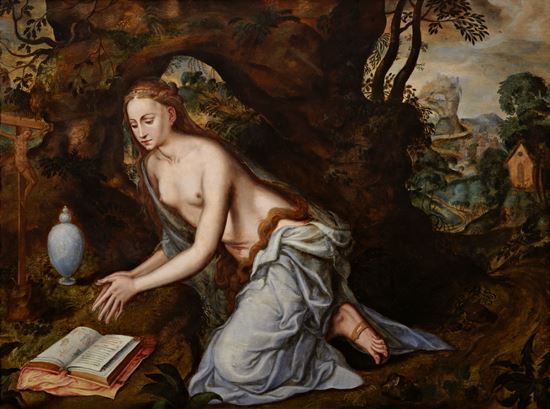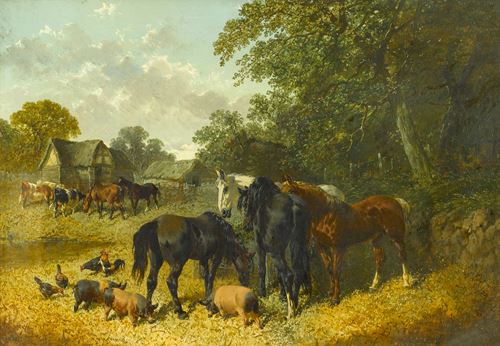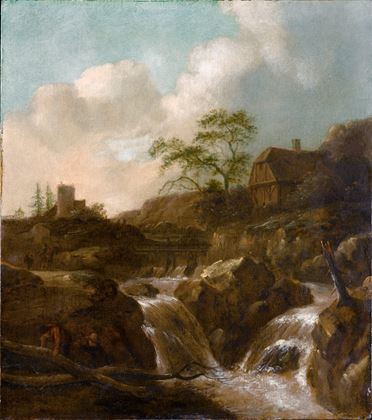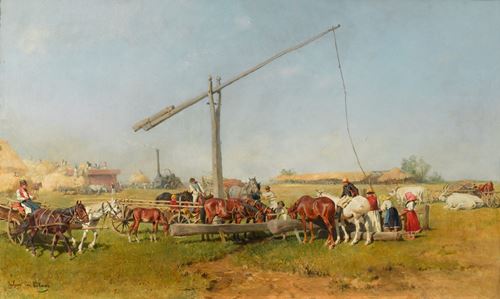an Massys
(Antwerp c. 1509 - Antwerp c. 1575)
The Penitent Magdalene
oil on panel
74.2 x 102.2 cm (29¼ x 40¼ in)
The Penitent Magdalene is a particularly intimate representation of Mary Magdalene set amidst a dense, sinewy forest. She prays intently towards an illustrated holy book, a vase and a wooden crucifix placed nearby. She appears to have stopped on a country track, the extension of which is seen in the right background, as it continues up towards a mystical citadel or geomorphic structure.
The composition of The Penitent Magdalene, a work which is attributed to a follower of Jan Massys displays many characteristics found in Flemish painting of the mid-sixteenth century. The theme and general conception can be traced to Jan Massys and his workshop, however the elongated proportions and the heavier, somewhat triangular face, could be attributed to the influence of the more progressive Flemish painter Frans Floris. The depiction of the partially clad Magdalene kneeling in a landscape was widespread at this period, but here the artist introduces an unusual element by creating a view through the grotto behind the saint's head. A similar but not identical device can be found in the work of another contemporary, Maarten de Vos, known through an engraving by Antonie Wierix.1
The present work is attributed to a follower of Jan Massys (c. 1509-1575). Massys, son of Quentin Massys (1466-1530), was a master of the Guild of St. Luke in Antwerp. After being exiled from the Brabant in 1544 for his heretical sympathies, it is thought that Massys went to France, possibly Fontainbleu, as well as Germany and Italy around 1549. He returned to Antwerp in 1555, and it was during his second Antwerp period (1555-1578) that he was most productive. Throughout his career he worked in a traditional style often influenced by the works of his father, in particular his satirical genre scenes. Massys’ oeuvre mainly focused on a small number of popular subjects, which he often repeated: the Virgin and Child, St Jerome and Mary Magdalene. However Massys is best known for his depictions of the female nude and frequently used Old Testament, allegorical and mythological subjects to incorporate the female form.
1 See Hollstein Dutch and Flemish Etchings, Engravings and Woodcuts, 1450-1700, vol. 44, Maarten de Vos, no. 1119, reproduced vol. 46, pl. 100.
The Penitent Magdalene is a particularly intimate representation of Mary Magdalene set amidst a dense, sinewy forest. She prays intently towards an illustrated holy book, a vase and a wooden crucifix placed nearby. She appears to have stopped on a country track, the extension of which is seen in the right background, as it continues up towards a mystical citadel or geomorphic structure.
The composition of The Penitent Magdalene, a work which is attributed to a follower of Jan Massys displays many characteristics found in Flemish painting of the mid-sixteenth century. The theme and general conception can be traced to Jan Massys and his workshop, however the elongated proportions and the heavier, somewhat triangular face, could be attributed to the influence of the more progressive Flemish painter Frans Floris. The depiction of the partially clad Magdalene kneeling in a landscape was widespread at this period, but here the artist introduces an unusual element by creating a view through the grotto behind the saint's head. A similar but not identical device can be found in the work of another contemporary, Maarten de Vos, known through an engraving by Antonie Wierix.1
The present work is attributed to a follower of Jan Massys (c. 1509-1575). Massys, son of Quentin Massys (1466-1530), was a master of the Guild of St. Luke in Antwerp. After being exiled from the Brabant in 1544 for his heretical sympathies, it is thought that Massys went to France, possibly Fontainbleu, as well as Germany and Italy around 1549. He returned to Antwerp in 1555, and it was during his second Antwerp period (1555-1578) that he was most productive. Throughout his career he worked in a traditional style often influenced by the works of his father, in particular his satirical genre scenes. Massys’ oeuvre mainly focused on a small number of popular subjects, which he often repeated: the Virgin and Child, St Jerome and Mary Magdalene. However Massys is best known for his depictions of the female nude and frequently used Old Testament, allegorical and mythological subjects to incorporate the female form.
1 See Hollstein Dutch and Flemish Etchings, Engravings and Woodcuts, 1450-1700, vol. 44, Maarten de Vos, no. 1119, reproduced vol. 46, pl. 100.




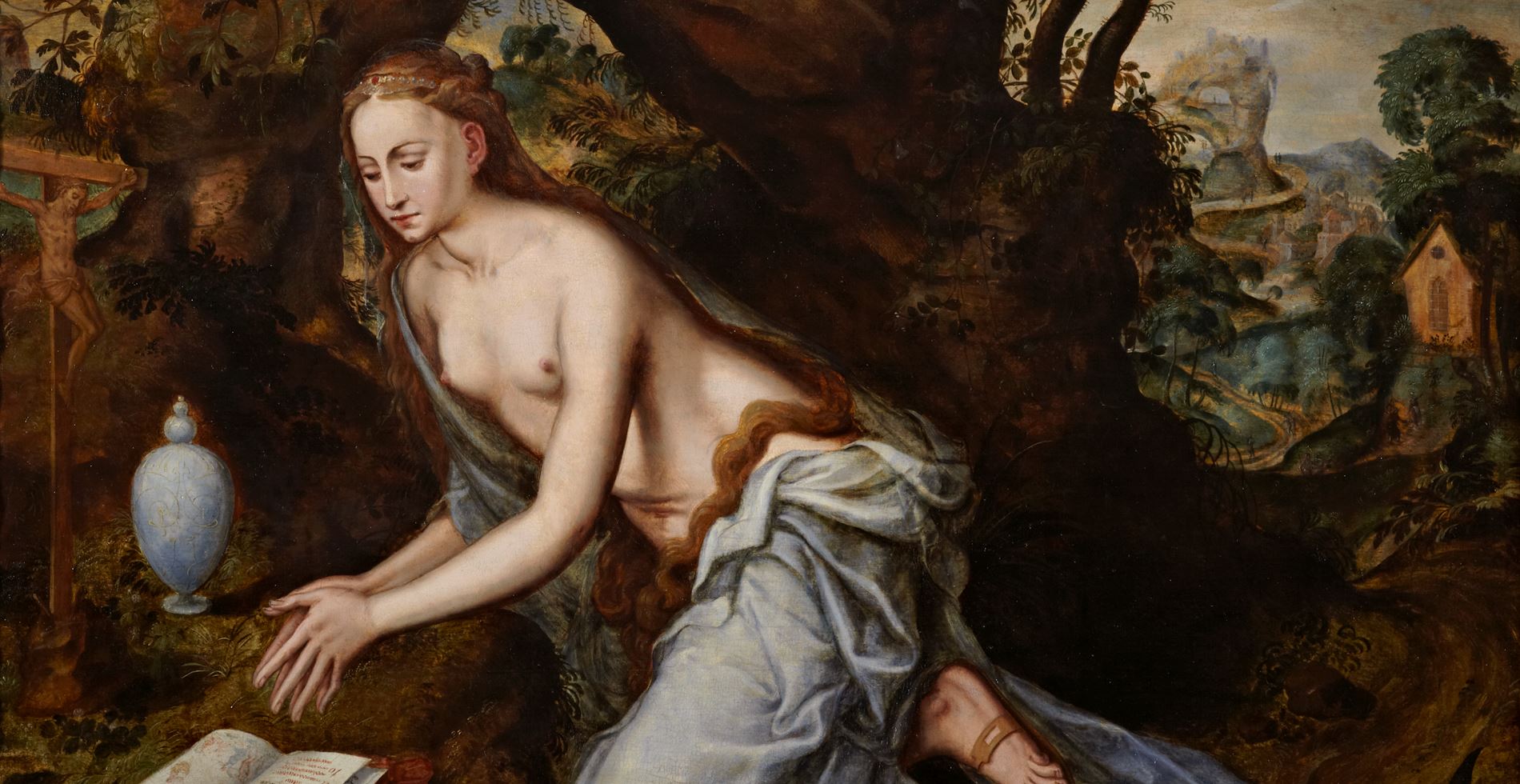
 contact
contact +44 20 7313 8040
+44 20 7313 8040


